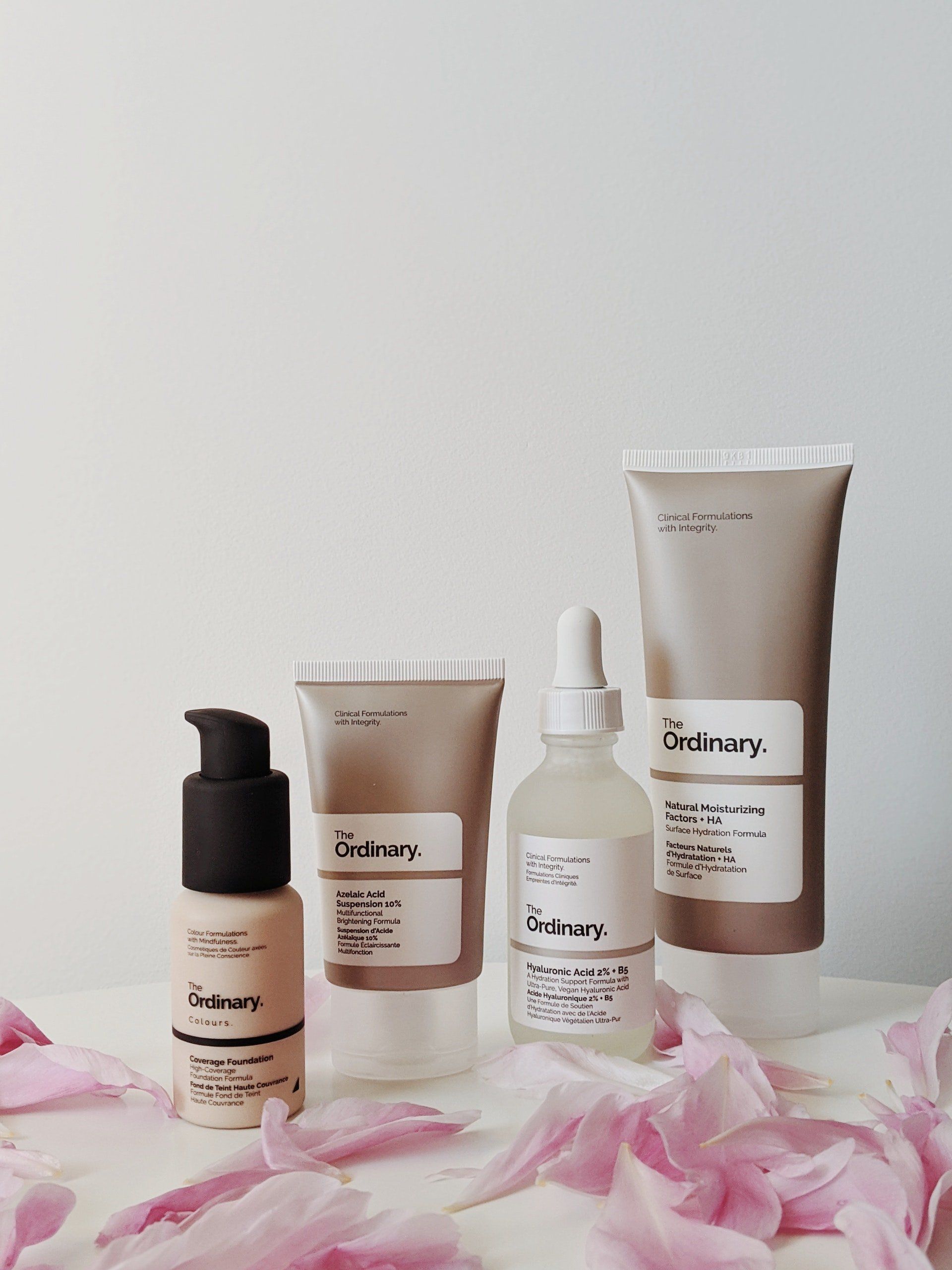Top Website Design News

By Aaron Elvery
•
November 8, 2024
The Situation: You’ve just launched your first Facebook ad campaign. Your hopes are high, your business is ready to make waves, and you eagerly open your inbox expecting a flood of customer messages. Instead, what you find is a chaotic mess of spam—unwanted promotions, suspicious links, and robotic chatter. Sound familiar? If you’re a new business just starting with Facebook advertising, this scenario can be all too real. But don’t worry —there’s a way to tame the chaos and take back control of your inbox. Why Does It Happen? Newly active business pages, especially those advertising on Facebook, are prime targets for spam. Increased visibility can be a magnet for opportunists, automated bots, and spam accounts. As frustrating as it is, this is not the end of your story—it’s merely the beginning of taking charge. HOW DO I MAKE IT STOP! A highly effective way to reduce spam is by restricting contact to only the countries where you do business. Here’s how to do it: On your business Facebook profile, click the circular profile icon in the top right corner of your page. Click Settings & Privacy. Select Settings. Go to Followers & Public Content. Under Country Restrictions, click Edit and enter the country or countries you operate within. This adjustment will limit contact from outside regions and reduce spam messages by more than 90%—unless, of course, your spam originates from within your country (which is unlikely). This simple step ensures your inbox remains focused on meaningful connections and genuine prospects. More Tips & Tricks for Facebook Step 1: Use Keyword Filters and Automated Responses Spam often follows a predictable pattern, whether it’s keywords like “click this link” or dubious sales offers. Use Facebook’s built-in keyword filtering system to automatically redirect or hide messages containing suspicious terms. Pro Tip: Automated responses can also help. By setting up a friendly, immediate response, you can subtly weed out spammers while ensuring real customers receive a prompt reply. Something like, “Thank you for contacting us! We’ll get back to genuine enquiries as soon as possible.” Step 2: Spotting the Red Flags Not all spam is immediately obvious. Learn to spot common characteristics of spammy messages, such as: Vague greetings like “Hello dear” or “Business proposal.” Profile pictures that don’t match user activity or appear to be stock images. Requests to click unknown links or download attachments. Identifying these traits early on allows you to report and block spam profiles, reducing the chances of repeat contact. Step 3: Employ Third-Party Tools If the flood persists, consider integrating reputable third-party tools designed to manage and filter Facebook messages. Some tools offer AI-driven spam detection, allowing you to focus on real leads and important customer questions. Step 4: Reap the Benefits of a Cleaner Inbox When Lucy implemented these changes, she noticed more genuine customer interactions. “My inbox felt more manageable, and I finally had time to focus on real customer conversations,” she shared. By reducing spam, you create space for meaningful connections—exactly what your business needs to grow. Final Thoughts and Your Next Step Spam messages can be draining, but they don’t have to overwhelm your business journey. Take a moment to adjust your settings, filter out noise, and engage with the people who truly matter. Share your experience below—what methods have worked best for you to combat spam? Let’s conquer this digital nuisance together!

By Aaron Elvery
•
July 24, 2022
When it comes to SEO, there isn't a magic formula to instantly send your site off to the #1 search result on Google. But there are some basic principles you should follow for a wonderful starting point. Here are the top 5 SEO practices to start with: #1 Write for people, not for search engines Always write original, interesting, high quality site content that's error free and relevant to your site. Search engines like Google can easily detect content that is duplicated from elsewhere online, that contains grammatical errors, or that is stuffed with keywords. #2 Add a blog to your site and use rich media To engage your site visitors and blog readers, create posts that include non-textual media like photos, videos, or original visualizations (infographics). Having that extra content (especially if it's captivating) will increase the time users spend on your site as well as the likelihood they will share your site with their own community. #3 Offer a positive user experience throughout your site Google will know if you're using your site to aggressively advertise your service, or if you're being too pushy. Always aim to offer site visitors a pleasant experience on your site. That means clear content, support when needed, and always an option to go back. #4 Create a network of internal links (but don't overdo it) Add links between different pages of your site and your blog, but try to follow a process that feels organic rather than heavy linking meant just for search engine crawlers. Link between pages that make sense, for example, on your services page, link a certain industry specific term, and link it to a blog post you wrote about it, that gives more information on that term. #5 Always check your site's Core Web Vitals Core Web Vitals are a standard site performance standard initially created by Google. The report shows site owners how their site pages perform 'for real,' how long it takes for site visitors to load site pages, and it offers ways to fix issues, if there are any.

By Aaron Elvery
•
June 29, 2022
When it comes to SEO, there isn't a magic formula to instantly send your site off to the #1 search result on Google. But there are some basic principles you should follow for a wonderful starting point. Here are the top 5 SEO practices to start with: #1 Write for people, not for search engines Always write original, interesting, high quality site content that's error free and relevant to your site. Search engines like Google can easily detect content that is duplicated from elsewhere online, that contains grammatical errors, or that is stuffed with keywords. #2 Add a blog to your site and use rich media To engage your site visitors and blog readers, create posts that include non-textual media like photos, videos, or original visualizations (infographics). Having that extra content (especially if it's captivating) will increase the time users spend on your site as well as the likelihood they will share your site with their own community. #3 Offer a positive user experience throughout your site Google will know if you're using your site to aggressively advertise your service, or if you're being too pushy. Always aim to offer site visitors a pleasant experience on your site. That means clear content, support when needed, and always an option to go back. #4 Create a network of internal links (but don't overdo it) Add links between different pages of your site and your blog, but try to follow a process that feels organic rather than heavy linking meant just for search engine crawlers. Link between pages that make sense, for example, on your services page, link a certain industry specific term, and link it to a blog post you wrote about it, that gives more information on that term. #5 Always check your site's Core Web Vitals Core Web Vitals are a standard site performance standard initially created by Google. The report shows site owners how their site pages perform 'for real,' how long it takes for site visitors to load site pages, and it offers ways to fix issues, if there are any.

By Aaron Elvery
•
June 29, 2022
When it comes to SEO, there isn't a magic formula to instantly send your site off to the #1 search result on Google. But there are some basic principles you should follow for a wonderful starting point. Here are the top 5 SEO practices to start with: #1 Write for people, not for search engines Always write original, interesting, high quality site content that's error free and relevant to your site. Search engines like Google can easily detect content that is duplicated from elsewhere online, that contains grammatical errors, or that is stuffed with keywords. #2 Add a blog to your site and use rich media To engage your site visitors and blog readers, create posts that include non-textual media like photos, videos, or original visualizations (infographics). Having that extra content (especially if it's captivating) will increase the time users spend on your site as well as the likelihood they will share your site with their own community. #3 Offer a positive user experience throughout your site Google will know if you're using your site to aggressively advertise your service, or if you're being too pushy. Always aim to offer site visitors a pleasant experience on your site. That means clear content, support when needed, and always an option to go back. #4 Create a network of internal links (but don't overdo it) Add links between different pages of your site and your blog. Try to follow a process that's organic rather than heavy linking meant for search engine crawlers. Link between pages that make sense, for example, on your services page, link a certain industry-specific term to a blog post that gives more information on that term. #5 Always check your site's Core Web Vitals Core Web Vitals are a site performance standard initially created by Google. The report shows site owners how their site pages perform 'for real,' how long it takes for site visitors to load site pages, and it offers ways to fix issues, if there are any.

By Aaron Elvery
•
June 29, 2022
When it comes to SEO, there isn't a magic formula to instantly send your site off to the #1 search result on Google. But there are some basic principles you should follow for a wonderful starting point. Here are the top 5 SEO practices to start with: #1 Write for people, not for search engines Always write original, interesting, high quality site content that's error free and relevant to your site. Search engines like Google can easily detect content that is duplicated from elsewhere online, that contains grammatical errors, or that is stuffed with keywords. #2 Add a blog to your site and use rich media To engage your site visitors and blog readers, create posts that include non-textual media like photos, videos, or original visualizations (infographics). Having that extra content (especially if it's captivating) will increase the time users spend on your site as well as the likelihood they will share your site with their own community. #3 Offer a positive user experience throughout your site Google will know if you're using your site to aggressively advertise your service, or if you're being too pushy. Always aim to offer site visitors a pleasant experience on your site. That means clear content, support when needed, and always an option to go back. #4 Create a network of internal links (but don't overdo it) Add links between different pages of your site and your blog, but try to follow a process that feels organic rather than heavy linking meant just for search engine crawlers. Link between pages that make sense, for example, on your services page, link a certain industry specific term, and link it to a blog post you wrote about it, that gives more information on that term. #5 Always check your site's Core Web Vitals Core Web Vitals are a standard site performance standard initially created by Google. The report shows site owners how their site pages perform 'for real,' how long it takes for site visitors to load site pages, and it offers ways to fix issues, if there are any.
Eleanor Rose Flowers
Aaron did an absolutely fantastic job creating my website for Eleanor Rose Florist! The whole process was smooth, and the result was even better than I had imagined. I’ve been receiving so many compliments from customers who love how beautiful and easy to use it is. It truly reflects my brand perfectly. I can’t recommend Aaron highly enough
Anglian Website Designs,
Arthurton Road,
Norwich,
Norfolk,
NR10 3QZ
© 2025
Anglian Web Designs. All rights reserved.


